Pediatric ENT
Pediatric ENT is a medical field focused on diagnosing and treating ear, nose, and throat disorders in children. Common issues include ear infections, adenoid enlargement, and tonsil problems.
Take the First Step Now
For more information, contact us
Schedule your appointment or online consultation with Prof. Dr. Mustafa Deniz Yılmaz now. Take the first step in your treatment process and let’s begin your journey to recovery together with personalized solutions.
Tonsil Problems
Upper airway obstruction and recurrent tonsillitis due to enlarged tonsils are the most common problems in children. Tonsil enlargement is often accompanied by adenoid enlargement. Treatment may involve medical monitoring or, if necessary, surgery.
How Long Does a Tonsillectomy Take?
A tonsillectomy takes about half an hour, and the patient can usually be discharged the same day.
At What Age Can Tonsil Surgery Be Performed?
If it causes severe obstruction, it can be done from the age of 2.
Is There a Specific Season for Tonsil Surgery?
Tonsil surgery can be performed in any season.
Adenoids
Adenoid enlargement in children can block the upper airway, leading to frequent sinus infections, chronic cough, snoring due to difficulty breathing at night, mouth breathing, sweating on the neck, and frequent turning during sleep. All children have some adenoid tissue, but if it grows excessively, it can fill the nasal cavity, leading to airway obstruction. Additionally, it can block the opening of the Eustachian tube, which ventilates the middle ear, causing fluid to accumulate in the ear. Treatment is usually surgical.
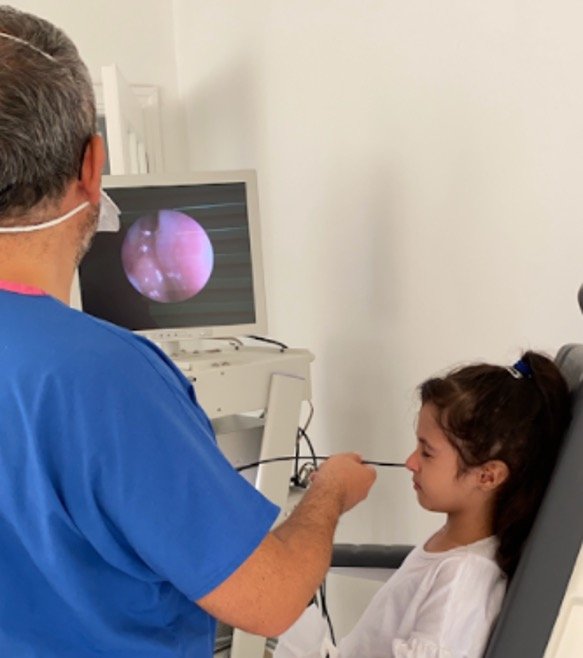
How Long Does Adenoid Surgery Take?
Adenoid surgery takes about half an hour, and the patient can typically be discharged the same day.
At What Age Can Adenoid Surgery Be Performed?
If it causes significant obstruction, it can be done from the age of 2.
Is There a Specific Season for Adenoid Surgery?
There is no specific season for adenoid surgery.
Middle Ear Infections
Usually seen in childhood, middle ear infections present with symptoms such as ear pain, ear discharge, and fever. Treatment includes antibiotics and antipyretics. This condition should be taken seriously and requires a doctor’s examination to avoid complications.
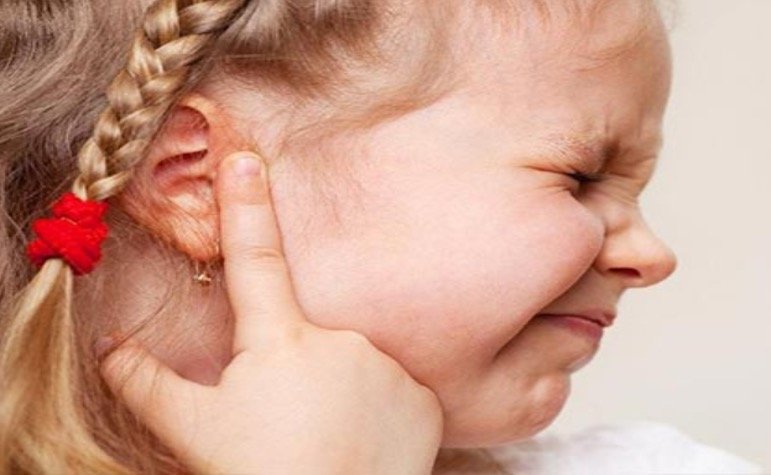
Ear Tube Placement
In about one-third of children, fluid accumulation in the middle ear can occur after viral upper respiratory tract infections. This is due to Eustachian tube dysfunction and blockage. In most children, this fluid drains within 15 days to a month, and middle ear function returns to normal. However, in cases where fluid buildup continues, the mucosa lining the middle ear and the eardrum itself may begin to change, and the fluid may become jelly-like, causing hearing loss.
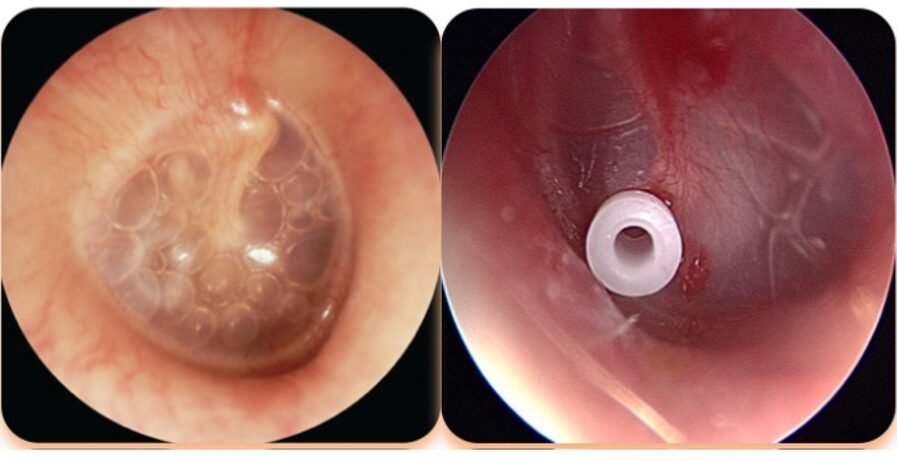
When Is an Ear Tube Needed?
Tubes are used to address pressure problems that cause fluid accumulation in the middle ear and eardrum retraction. This condition is usually associated with adenoids or allergies. Tubes may also be used in cases of recurrent bacterial middle ear infections, middle ear bleeding, or other causes of eardrum retraction. Although often required for children, adults may also need ear tubes.
How Are Tubes Inserted in Children?
Both local and general anesthesia can be used, but general anesthesia is more commonly used for children. A microscope is used to enter through the ear canal, and an incision is made in the eardrum, called a myringotomy. Fluid in the middle ear is then drained, and a tube is placed in the incision, with one end in the outer ear and the other in the middle ear. No visible change is seen in the patient’s ear.
Are Tubes Permanent?
No, the eardrum will eventually expel the tube on its own. Rarely, the tube may not come out naturally, and the doctor may need to remove it. The shape of the tube also affects how long it stays in place. T-tubes and Paparella tubes typically stay in place longer.
Are Tubes a Permanent Solution?
Ear tubes usually resolve middle ear issues, but if the underlying cause of pressure problems remains, the condition may recur once the tube is out. Therefore, adenoids, allergies, or other causes should be appropriately treated. Some patients may need tubes inserted multiple times, and even then, a permanent solution might not be achieved.
What Are the Risks of Ear Tube Placement?
Ear tube placement is generally a problem-free procedure, though complications can sometimes occur. Risks include anesthesia-related issues, eardrum perforation during surgery, and tube displacement into the middle ear. After surgery, ear discharge, calcification of the eardrum, or a persistent perforation may occur at the tube insertion site. Ear discharge is a sign of infection and is usually easily treated with antibiotics.
Post-Surgery Care
After ear tube placement, the most important aspect of care is preventing water from entering the ear, as this can cause infections. Other than that, the patient can resume normal activities. Regular follow-up visits, typically every three months, are recommended for patients with ear tubes.
Cholesteatoma:
Cholesteatoma usually develops as a result of middle ear ventilation problems that occur during childhood. It is a condition in which the skin of the ear canal and eardrum collapses toward the middle ear, taking on a different character and becoming an inflammation-producing tissue. This tissue progresses by eroding the small bones in the middle ear and the bones in the mastoid region behind the ear. As it advances toward the inner ear, it can cause hearing loss and dizziness. If it extends to neighboring brain tissue, it can lead to serious, life-threatening complications like meningitis and brain abscess.
Treatment involves surgically removing this inflamed tissue completely and, in suitable cases, repairing the bones to restore hearing.
Sometimes this condition can also be congenital, or it can occur due to external ear canal infections or trauma.
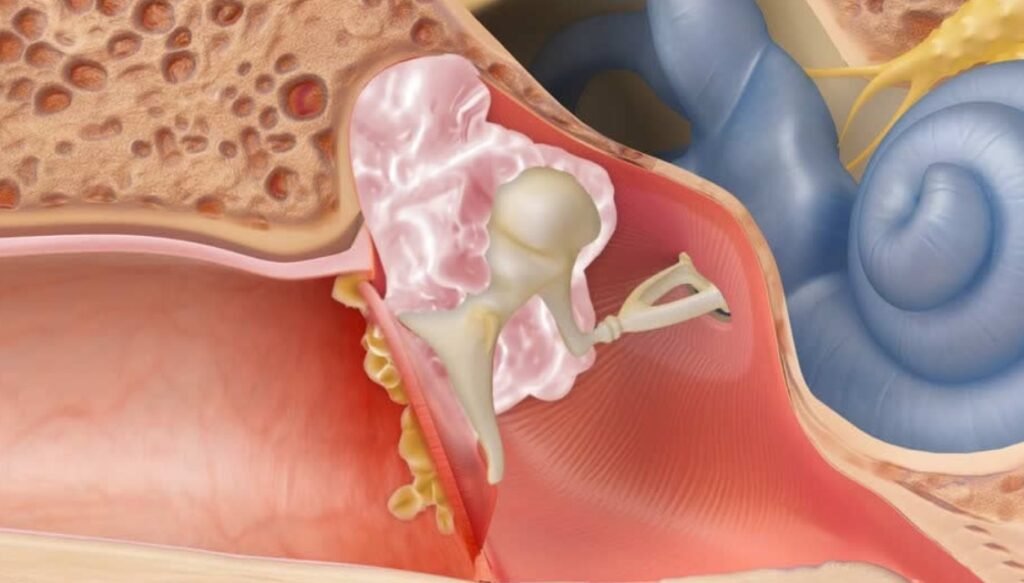
Cochlear Implant (Bionic Ear):
Cochlear implants are devices that restore hearing by placing electrodes directly in the inner ear for patients with severe hearing loss who cannot benefit from hearing aids. They can be placed in patients with congenital hearing loss until the age of 4, and in those who lost their hearing later in life and learned to speak, without any age limitation. Thanks to this technology, individuals who would otherwise grow up deaf and mute can learn to speak and live in society like healthy individuals without any hearing loss.
Whether a child is a suitable candidate for a cochlear implant is determined through tests and audiological evaluations conducted by specialist audiologists.
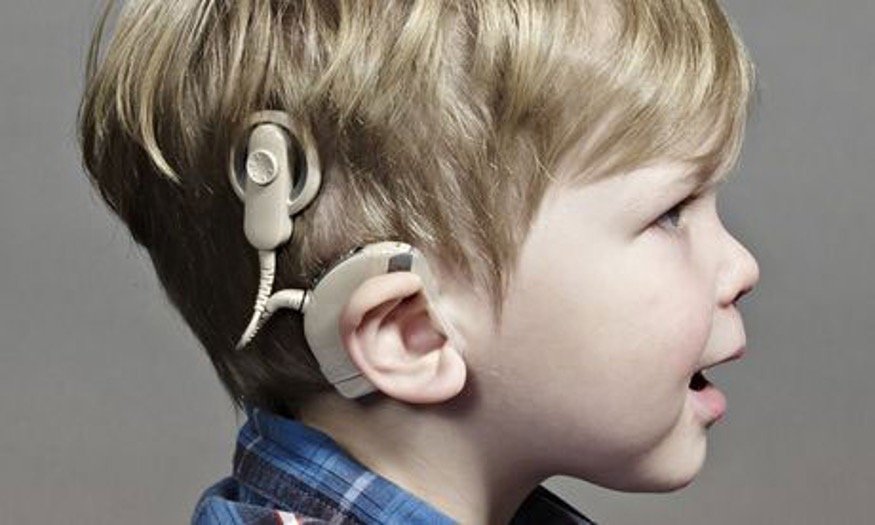
Hearing Evaluation in Children:
Evaluating hearing and detecting any hearing loss is crucial, especially in infancy and childhood, as it significantly impacts the development of language (speech) and cognitive skills later in life.
Hearing evaluation in infants and children is conducted in different ways.
1. Behavioral Observation Audiometry
Typically used in infants (0-4 months). In an open space, pure tone stimuli, speech stimuli, and various noises are presented to the baby, and the audiologist observes the baby’s behavioral responses (e.g., blinking, head turning, hand and foot movements, crying, and sucking reflex) to determine the baby’s hearing thresholds.
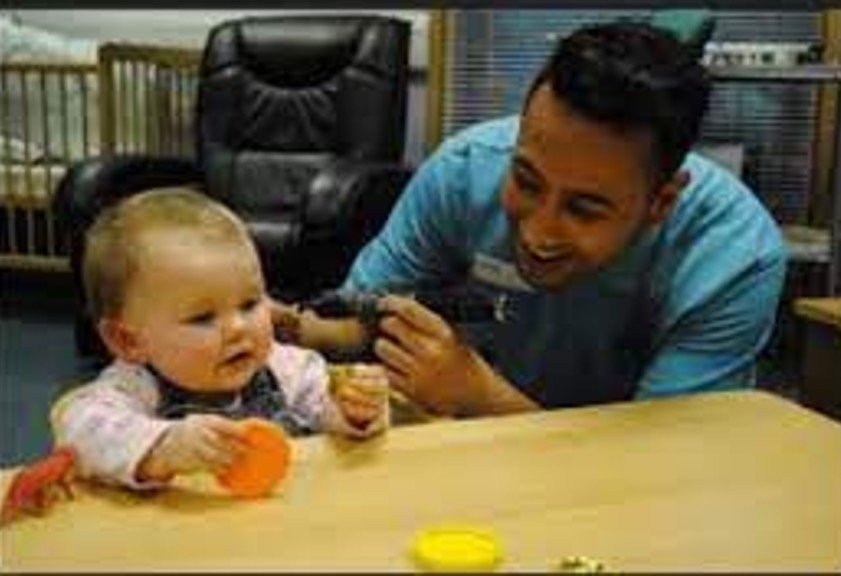
2. Visual Reinforcement Audiometry
Generally applied to infants and children (5-24 months). It can be done in an open space or with headphones. The child is seated to see both sides. There are illuminated boxes with moving toys on both sides. During the test, an audiologist plays with the child to focus their attention. Subsequently, sound stimuli are presented along with visual cues, and the child’s response is monitored to determine hearing thresholds.
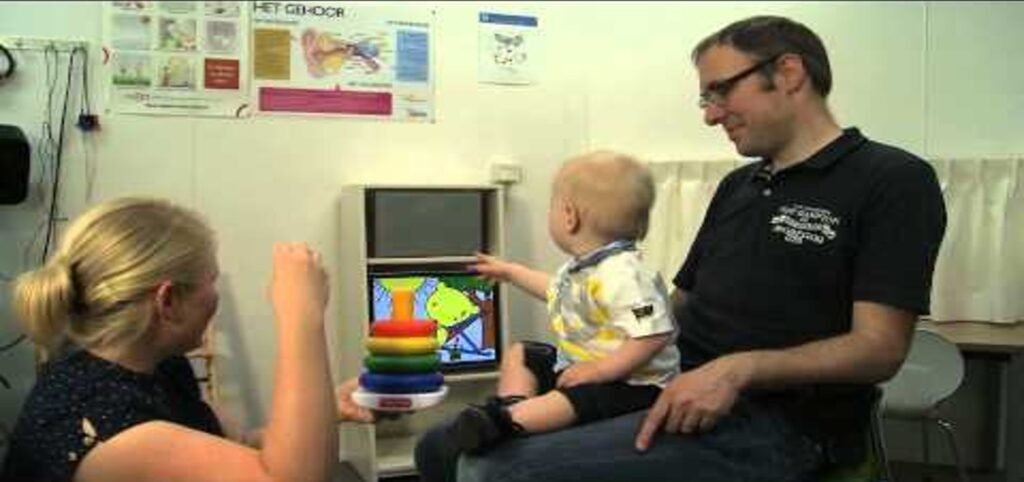
3. Play Audiometry
Typically used in children (24 months and older). The test is conducted in an open space or with headphones. The child wears headphones, and Legos or toys are placed in front of them. The child is conditioned to place a Lego into a box each time they hear a sound. In this way, the child’s hearing thresholds are determined.
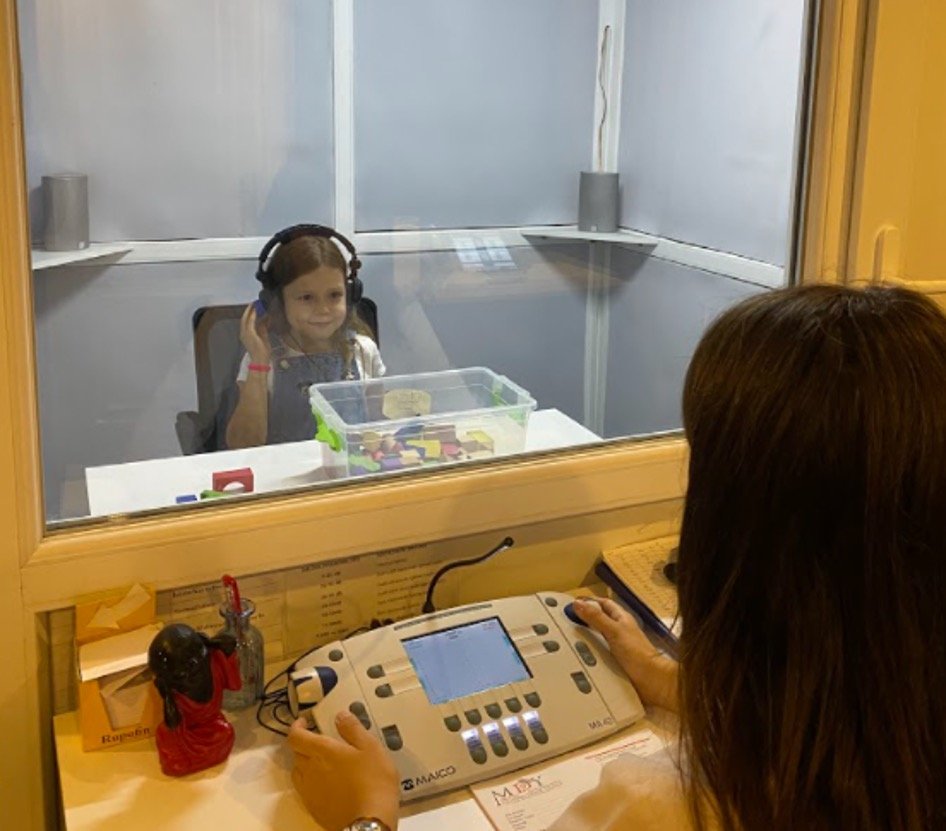
Tympanometry
The tympanometry test available in our clinic measures middle ear pressure to detect the presence of fluid in the middle ear or abnormalities in the ossicular system. It also assists in diagnosing middle ear air-pressure issues and Eustachian tube problems. It is frequently used in diagnosing ear problems in children.
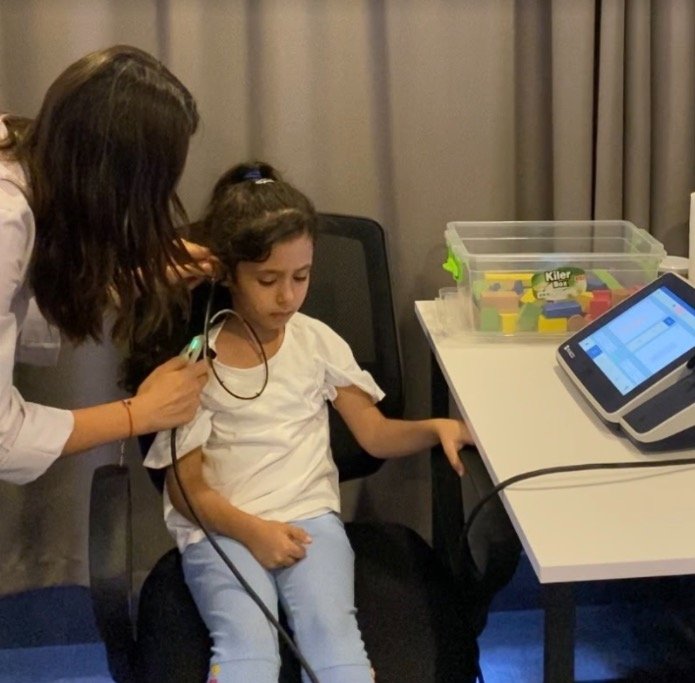
Acoustic Reflex Test
Acoustic reflex testing provides detailed and objective information about the function of regulatory cells in the inner ear, as well as the auditory and facial nerves. It is also used for the objective assessment of hearing in children and infants.
My nephew Ugur Karaer was suffering from empty nose syndrome. We went to every doctor in Istanbul. Finally, God brought us to Dr. Deniz. He performed the surgery successfully and saved my nephew's life. May God bless him.
I don't know how many surgeries I've had myself. But when it comes to children, everything calms down. 🙁 After seeing three doctors for my 2.5-year-old daughter's adenoid and tonsillectomy, we thankfully found Prof. Dr. Mustafa Deniz Yılmaz. His knowledge and patient approach made us believe he was by far the best doctor in this field. His assistant, secretary, the specialist who performed the hearing test... the entire team was extremely professional. Success is a team effort. That's why the whole process went smoothly, and we left satisfied. 💕 May God bless him 🙏🏻
We came from Almaty on vacation, and my son started having ear pain from the very first day. They recommended drops and medications, but nothing helped. We stumbled across a doctor online and decided to take a chance. She turned out to be wonderful, and after the first dose of medication, my son felt better. Within a week, there was no trace of the infection. Special thanks to the translator for her care, understanding, and professionalism.
I was suffering from empty nose syndrome. For those who don't know, I should say that almost all of my nasal tissue was removed. It is a very bad disease. I went to 100 ENT doctors in Istanbul and they couldn't find a solution. Finally, I found Deniz Hoca, who is an expert in this field, and he took cartilage from my rib and performed the surgery and I got better. Thank you very much for everything.
I had a tonsillectomy performed by our doctor, Mustafa Deniz Yılmaz. The surgery went smoothly, and although it's said to be more difficult for adults, I recovered very quickly. I'm so glad I chose Mustafa.
Hello, they told me that my parotid gland needed to be removed. I went to so many doctors that I finally decided on Dr. Mustafa. I am glad I chose Dr. Mustafa. You do not need to look for a doctor, you can choose my doctor with peace of mind without any worries.
I had a nose surgery 9 months ago by Mustafa Deniz Hoca. Both he and his team are always in touch with you before and after the surgery and provide detailed answers to questions. I am very pleased with my nose in terms of aesthetic appearance and health. Thank you and your entire team for everything.
First of all, I would like to thank my instructor Mustafa Deniz Yılmaz for his efforts. I had a nose surgery about 4 months ago. Like everyone else, I had the opportunity to research and compare the videos taken by many people who had this surgery and the perspectives of experts in their field on nose surgeries. I am very happy that I made the right decision and had surgery with my instructor Mustafa. I sincerely recommend my instructor Mustafa to everyone who wants to breathe both aesthetically and healthily and has problems.
I had a nose surgery in February. They never failed to show interest from the moment I entered the clinic until the last moment. No one even understands that I had plastic surgery. Mr. Deniz is one of the best in his field. I recommend it to everyone.
I had a nose surgery 3.5 months ago. The surgery and recovery process went great. There are a few things you should pay attention to after the surgery, they don't affect your quality of life too much. The doctor makes you feel very comfortable about that because it's not as complicated as you think. Other than that, I can breathe easily now, which is the most important thing. Also, Assistant Ayşegül Hanım gets back to you directly at any time of the day, no matter how long it has been since the surgery, if you have any questions. I'm very happy that I chose the right doctor.
I met Dr. Deniz upon the recommendation of another patient. He performed my ear surgery approximately 6 months ago with the diagnosis of Cholestatum. His care and follow-up of his patient both before and after the surgery for 6 months is commendable. I would also like to thank Dr. Deniz for his confidence in his patient and his friendly approach. I am in a much better position after the surgery, both in terms of hearing and risk of infection. I would like to thank Prof. Dr. Mustafa Deniz Yılmaz and his team.
I went to my dear teacher Deniz because of my breathing difficulties. He and his team were very cheerful and caring. My surgery was very successful and our doctor Deniz and his team were always caring throughout the process. We definitely recommend them, they are very knowledgeable, you will never regret it.

Anesthesia Type: General

Operation Time: 2-3 Hours

Pain: Mild

Length of hospital stay: 1 night

Recovery Time 7 days
Fill in the Form
Let us call you
Take the First Step Now
For more information, contact us
Schedule your appointment or online consultation with Prof. Dr. Mustafa Deniz Yılmaz now. Take the first step in your treatment process and let’s begin your journey to recovery together with personalized solutions.



